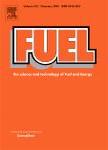版权所有:内蒙古大学图书馆 技术提供:维普资讯• 智图
内蒙古自治区呼和浩特市赛罕区大学西街235号 邮编: 010021

作者机构:Univ Shanghai Sci & Technol Sch Energy & Power Engn Shanghai 200093 Peoples R China Shanghai Key Lab Multiphase Flow & Heat Transfer Shanghai 200093 Peoples R China
出 版 物:《FUEL》 (燃料)
年 卷 期:2020年第271卷
页 面:117609-000页
核心收录:
学科分类:0820[工学-石油与天然气工程] 080702[工学-热能工程] 0817[工学-化学工程与技术] 08[工学] 0807[工学-动力工程及工程热物理]
基 金:National Natural Science Foundation of China [51706144, 51606128] Natural Science Foundation of Shanghai [17ZR1419500] Chenguang Program by Shanghai Education Development Foundation Shanghai Municipal Education Commission [18CG51]
主 题:Sewage sludge Hydrothermal carbonization Hydrochar Multiple linear regression Reaction severity
摘 要:Hydrothermal carbonization (HTC) has emerged as a promising method for sewage sludge treatment. It is important to understand how process conditions (i.e. temperature, duration, and HTC reaction severity) and feedstock properties affect the product characteristics, which has been examined statistically using multiple linear regression (MLR) technique in this study. Good agreement has been observed between the results from the analysis of variance (ANOVA) and those reported by the experiments. The fuel properties of hydrochar were affected by the characteristics of raw sludge on different statistical significance. The HTC reaction severity combining with HTC duration or temperature was deemed statistically significant for hydrogen, oxygen, nitrogen, volatile matters and ash contents in the hydorchar, while HTC duration and HTC temperature were of statistical significance to sulfur and fixed carbon contents, respectively. However, carbon content in the hydrochar was only statistically dependent on the initial sludge properties. Subsequently, MLR models were developed based on ANOVA results, suggesting that these models fitted the data associated with hydrochar properties well in terms of correlation coefficiency 0.8 and root mean squared error of calibration 3%. Meanwhile, all these developed models could reasonably predict the fuel properties of hydrochar, whose values were within 10% of the corresponding experimental values. Thus, they can be adopted as a general guide or a screening tool to meet specific carbonization objective.